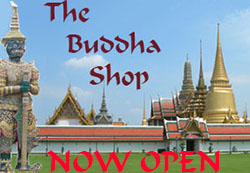Wat Chakrawat
Live Crocodiles of Wat Chakrawat
Chakrawat in Hindi refers to either a cyclone or a storm. Wat Chakrawat might just be brewing its version of a mini storm since it is famous for its crocodiles. Introduced as a Royal temple, Wat Chakrawat is one of Bangkok and Thailand’s best attractions as far as temples are concern. One thing that separates it from other temples is that its ubosot is facing westward towards the famous Emerald Buddha of the Grand Palace. The main temple might be small but the adjacent temple houses are where one of the three largest groups of monks and novices live.
What to See
Inside the small temple compound are a set of buildings that are designed differently from the others. These are all crammed together. Upon entering the gate a small wiharn with an outer wall decorated with unusual black and gold pattern can be seen. What makes this unique is it is commonly seen in interior walls or roofs but not in something expose as the outer wall. Next to it is a large black wiharn in a more conventional style.
To the left of the entrance stands a staircase leading to the platform containing a mondop topped with a prang. Mondop is a square based building or a shrine with a pyramid shape roof (spire) carried by columns. It houses relics, sacred statue or it serves as a shrine. In this case it served as Buddha’s footprint shrine. Beneath this platform are small ponds that hold a few straggly looking crocodiles. This practice of keeping these reptiles began when a few of its kind where found in the Chao PhrayaRiver near the temple.
Near the location of these crocodile ponds are large modern prang. Gold was used to a minimal amount to give more emphasis to the Buddha images facing these four sides of the prang. Prangs are structure that resemble a corn. Ubosot on the other hand are buildings that are found inside a Buddhist temple. It is used as a holy prayer room. The large white ubosot faces this prang. On the eastern side of the temple wall houses a small reclining Buddha. Next to this image is a concrete grotto referred to as Buddha’s shadow. Some worshipers pray to this image and live their gold leaf offerings behind.
Next to this Buddha grotto is a small statue of a fat monk that is said to be tempted to indulge the lusty females who were seeking his company. He was said to be very attractive that he suffers from the unwanted attention of the female species. In order to avoid attracting the girls he decided to make himself looked so fat.
The Crocodile Wat as it is referred to house three live crocodiles and a big stuffed animal with his mouth open wide to show his set of very big teeth. This crocodile was once part of the original strays that reached the Wat through the river. Most often than not, the temple grounds are often mistaken for a car park. It seems that the whole neighborhood is parking their cars at the temple ground or just offering their merits to Buddha. One of this temple’s charms is the small gate that leads to the caves and a highly ornamented chedi that sits atop the hill. Chedi are Buddha stupa or shrine. Unfortunately though, most of the time the temple is locked and the most memorable part of the visit is to see the crocodiles and stray dogs.
How to Get There
The easiest route is to take a boat ride to Ratchawong Pier. From this pier, taking a short walk from Ratchawong Pier will bring visitors to a small alley. Take a sharp turn and proceed to Wat Chakrawat. Visitors will pass by the temple’s school and large living quarters before they can reach the main temple compound. Another alternative of going there is to walk down Chakrawat Road and turn left to Sampaeng Lane. One enters a large “carpark” and the wat is on the left of this “carpark”.

